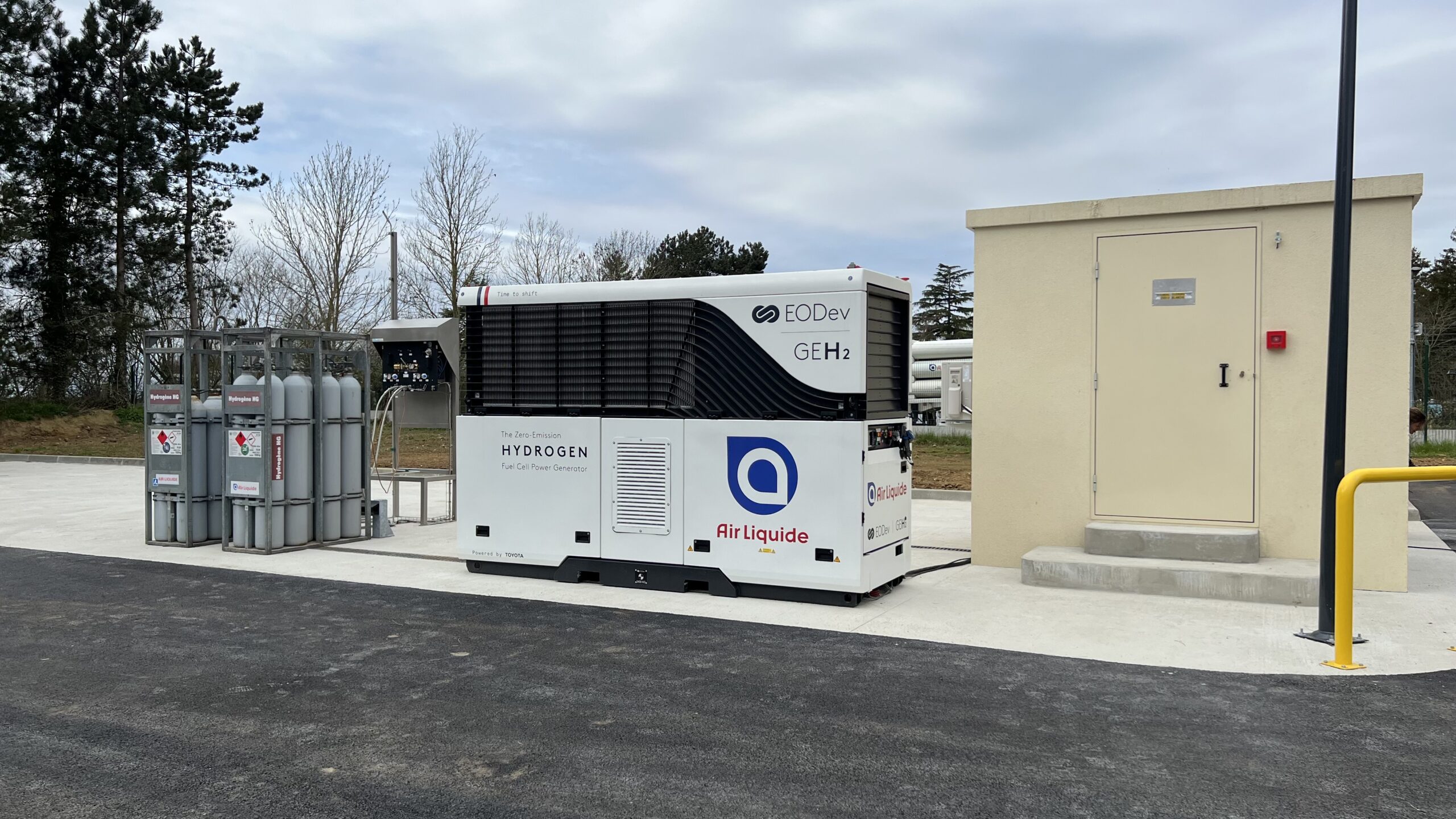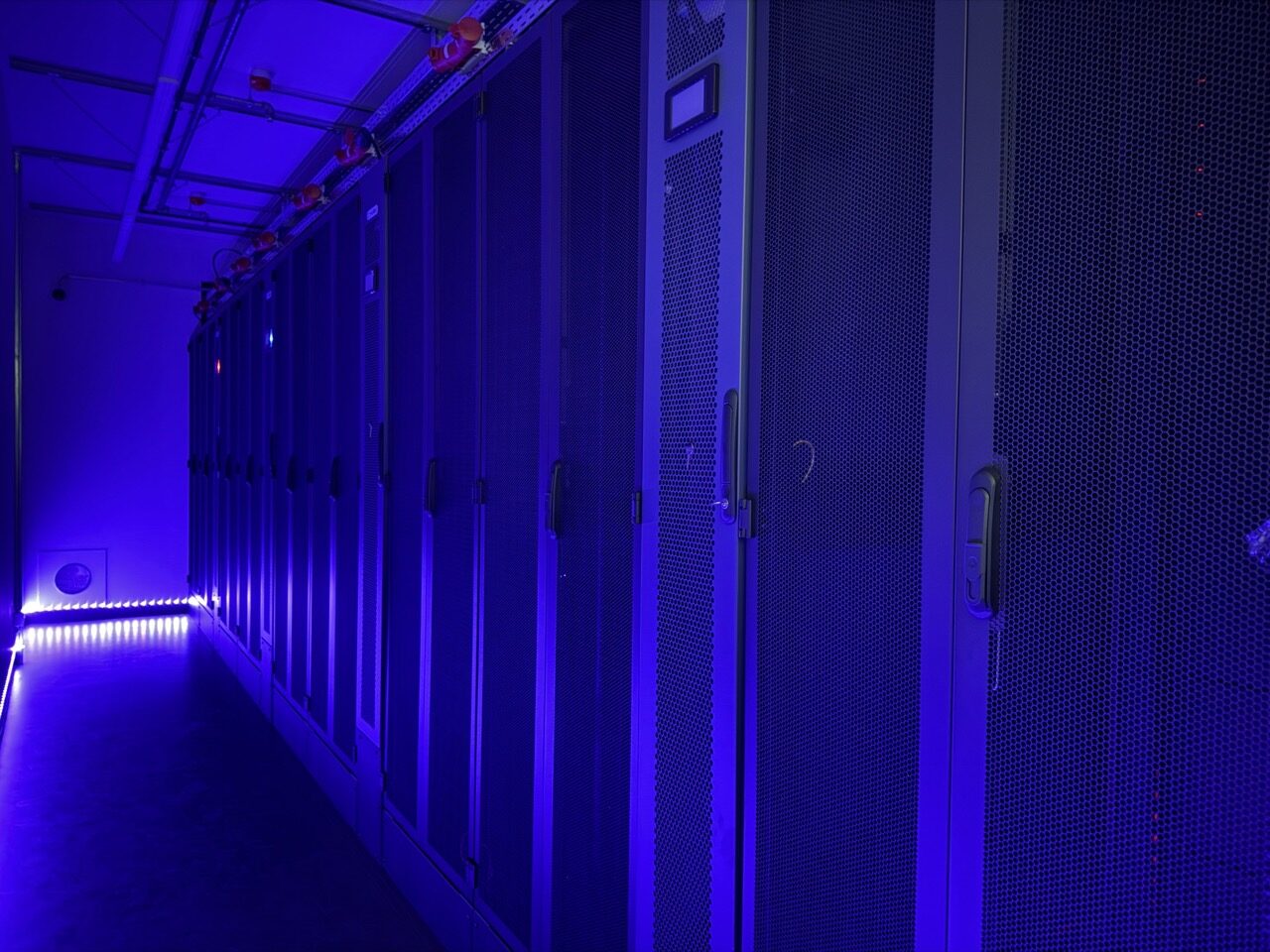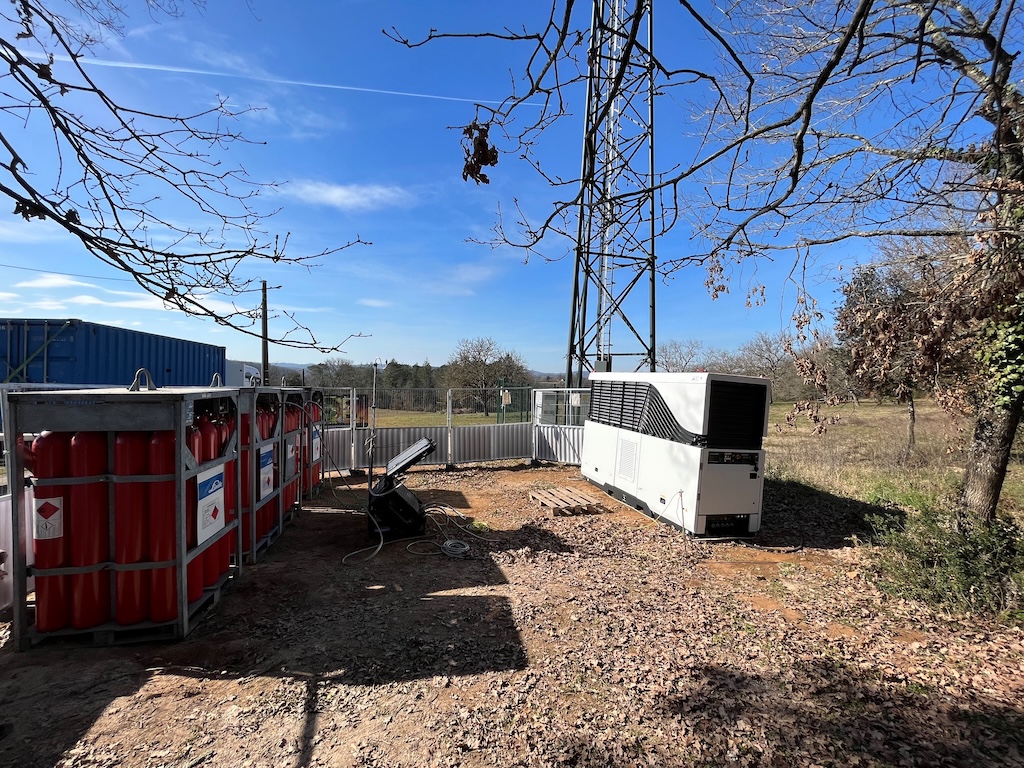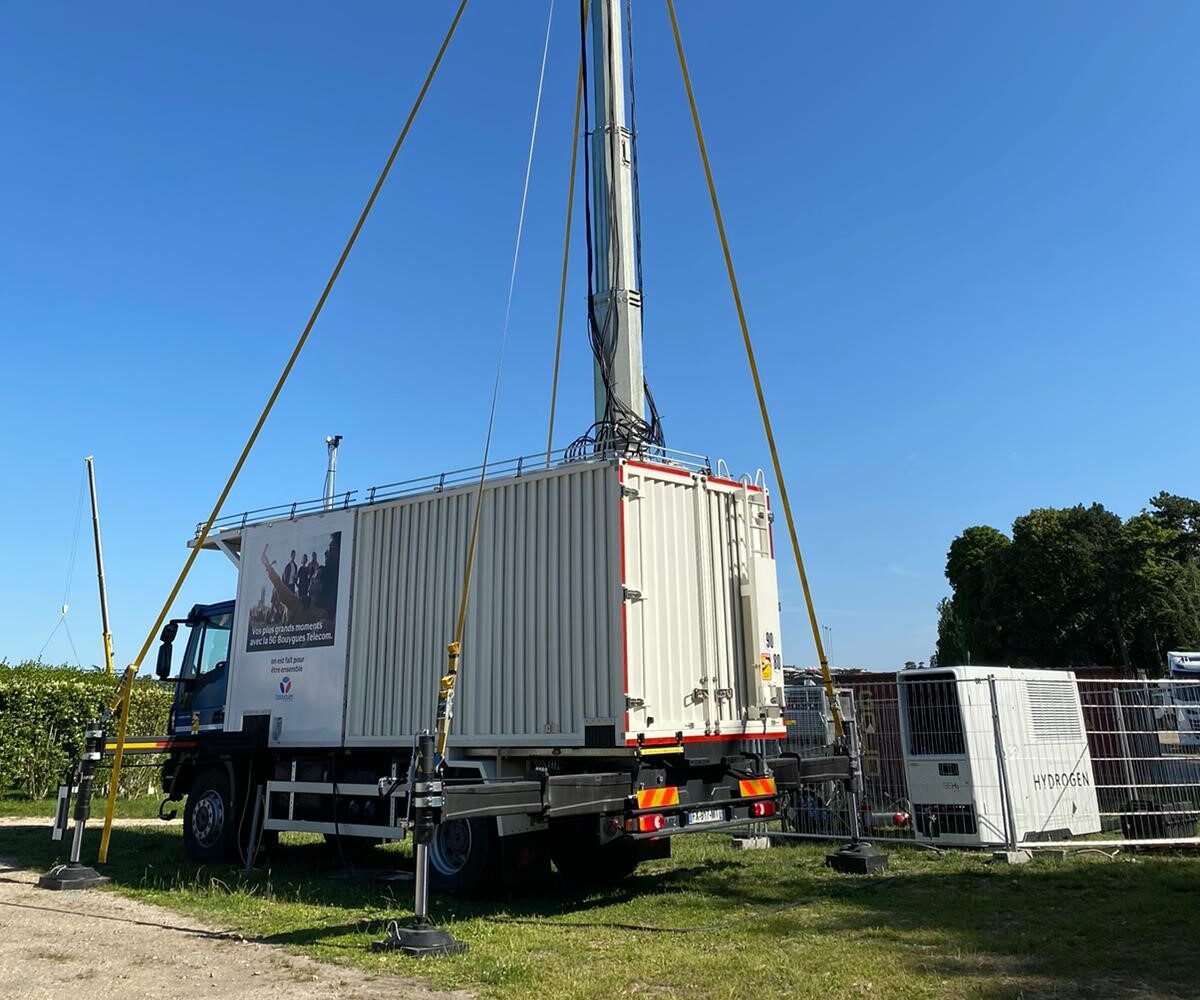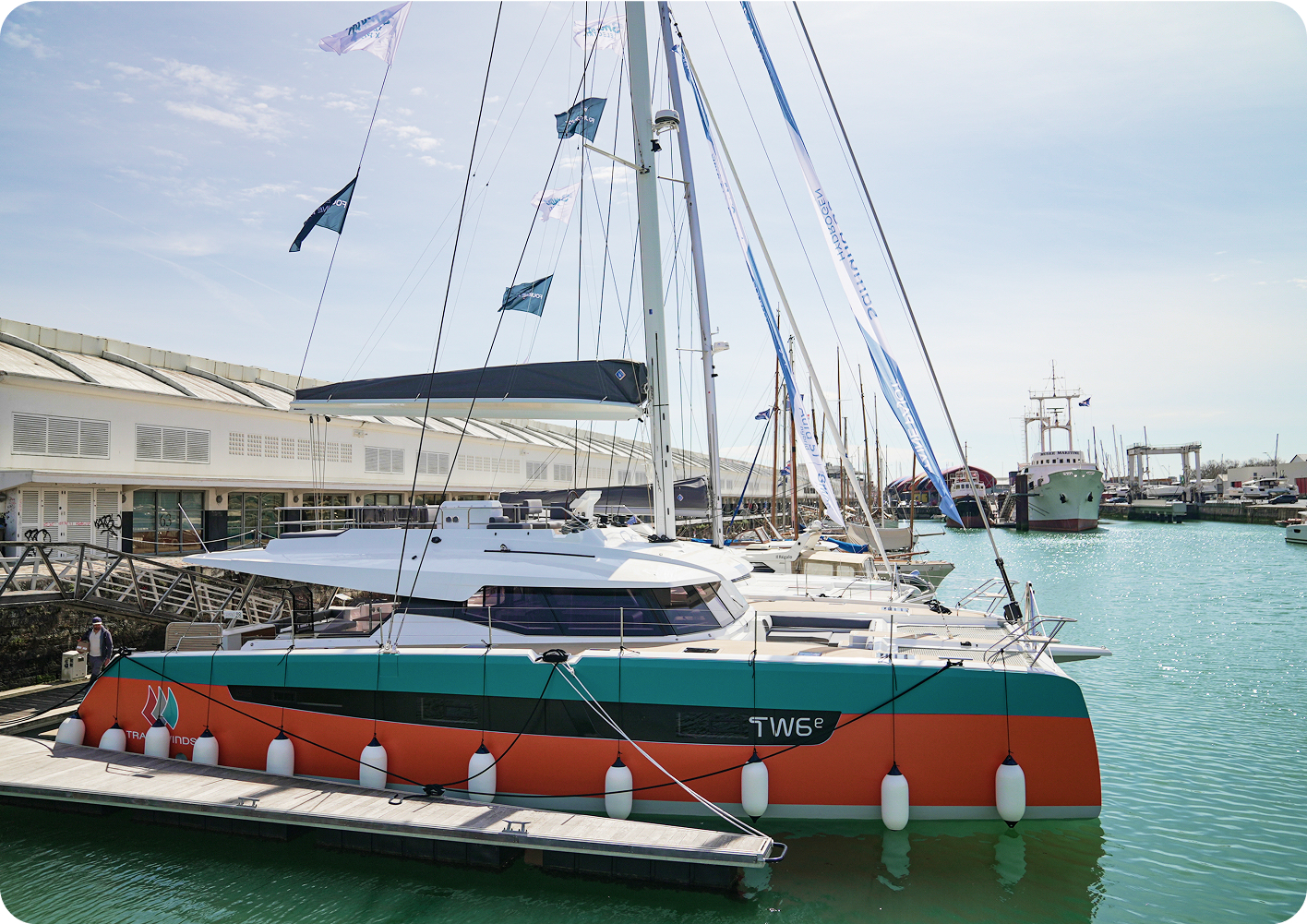An ally in the event of a power cut
The Campus Innovation Paris in Les Loges en Josas has five buildings dedicated to the Research and Development teams. As such, it is crucial that the facilities do not suffer any power cuts.
A prime power configuration
While the use of EODev hydrogen generators is becoming increasingly common in a ‘prime power’ configuration (on construction sites or during public events) when the grid alone is insufficient or non-existent, their ‘back-up’ application is less widespread. In fact, its use as a back-up source of electricity, to compensate for power cuts on the grid, is not (yet) very widespread, even though tests have already been carried out on certain sensitive sites such as hospitals and data centers.
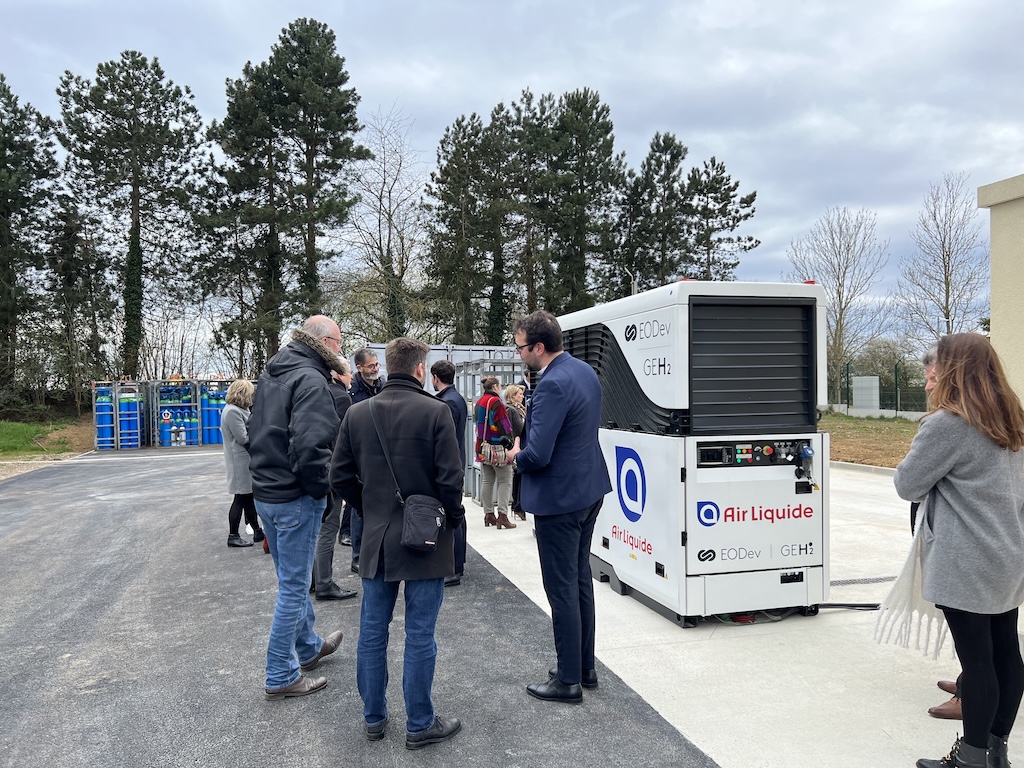
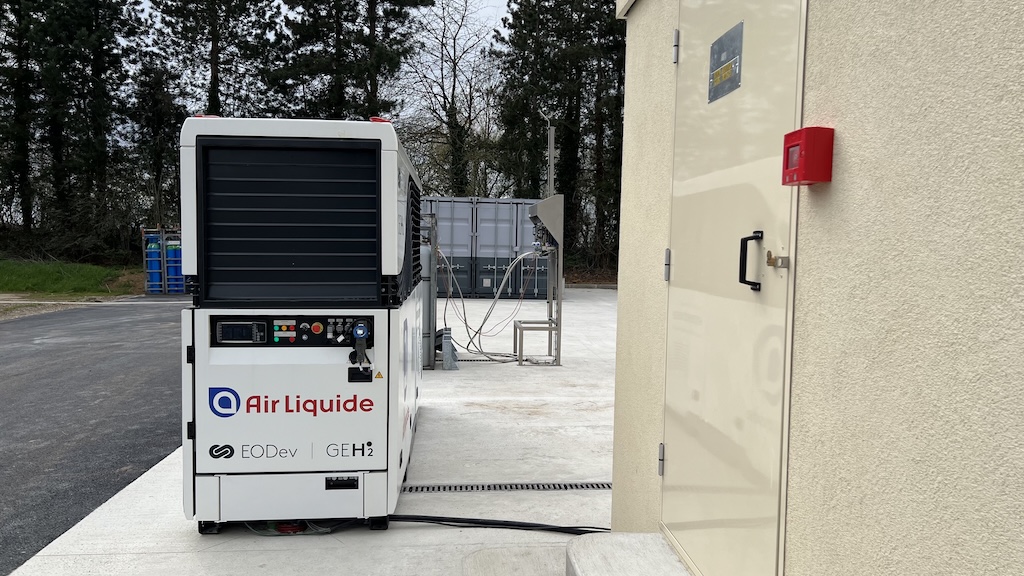
50 kW of instantaneous power
The GEH₂ installed is configured to take over in the event of a service interruption. It works in tandem with an inverter, which intervenes first, until the solution comes into action. The electro-hydrogen unit is then supplied via racks of hydrogen stored in high-pressure cylinders and an expansion plate. The whole system is automated and can instantly deliver 50kW of power.
A customised expansion stage
To operate, the GEH₂ must be supplied with hydrogen and the gas must be expanded from 200 bar to 11 to 17 bar once it is in contact with the unit and the fuel cell inside. Faced with an unprecedented system and configuration in back-up mode, EODev worked with Air Liquide to adapt its expansion plate to make a bespoke model that would be protected from the elements.
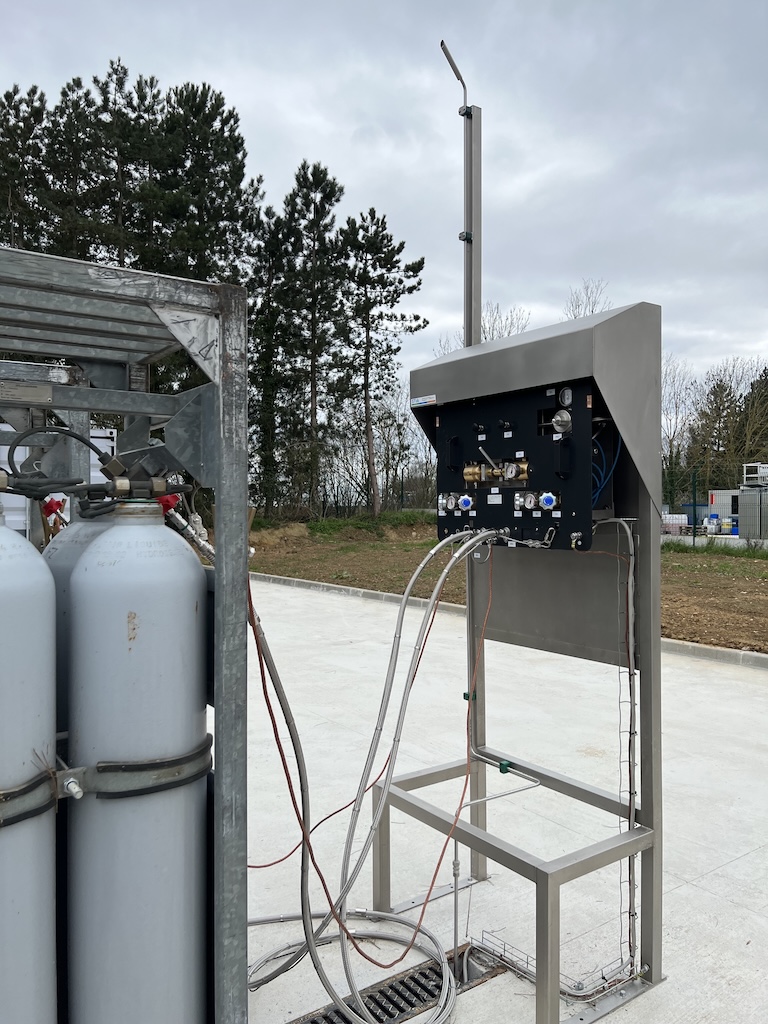
“The hydrogen genset is part of an identical energy management system, but it has the advantage of being much faster than a diesel system, so in the end it fits in much better with our on-site back-up energy requirements.”
Bruno Florissi, Responsable de Pôle Air Liquide
